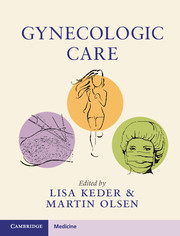Book contents
9 - Permanent Female Sterilization
from Section 2 - Gynecologic Surgery
Published online by Cambridge University Press: 01 February 2018
Summary
Introduction
Permanent female sterilization remains one of the most popular methods of birth control. It is the fifth most commonly performed procedure in the United States, following cesarean section, abortion, cholecystectomy, and coronary angioplasty. [1] It provides a safe and effective method of birth control for women who have completed childbearing. It remains a viable option for women who have contraindications to medical contraceptives. It can be performed at any time and there are multiple ways to achieve blockage of the tubes. Different approaches are available which have their own risks and benefits, and provides women with options to choose from.
Scope of the Problem
It is estimated that as much as half of all pregnancies in the United States are unintended at the time of conception.[2] Unintended pregnancies are associated with a number of adverse maternal behaviors including lack of or limited prenatal care, smoking, and drinking during the pregnancy, failure to breastfeed, and poor maternal-child bonding. The costs of caring for these unintended pregnancies are estimated to be anywhere from $11.1 billion to $11.3 billion per year. These costs include only prenatal care, labor and delivery, and infant care for a year; they do not include nonmedical care and long-term costs because they are more difficult to estimate. [3] Nor do they consider the emotional burden or the costs to the woman in terms of her personal or professional goals. This highlights the importance of safe and effective contraception. According to data from the National Survey of Family Growth, which provides data from 2011 to 2013, the most commonly used methods for contraception include the pills (25.9 percent), female sterilization (25.1 percent), the male condom (15.3 percent), and intrauterine devices/subdermal implants (11.6 percent). [4] In choosing a contraceptive option, one has to consider efficacy, safety profile, ease of use and adverse effects. For women who have completed childbearing, the option of female permanent sterilization is certainly practical and cost-effective.
Timing
Female sterilization can be performed at any time during the menstrual cycle, following a pregnancy or an abortion, or during cesarean delivery. If the procedure is not performed immediately postabortion or postpartum, the patient should be using an effective contraceptive, or the sterilization procedure should be performed during the follicular phase, to avoid the chances of a concurrent, undiagnosed pregnancy.
- Type
- Chapter
- Information
- Gynecologic Care , pp. 79 - 88Publisher: Cambridge University PressPrint publication year: 2018

